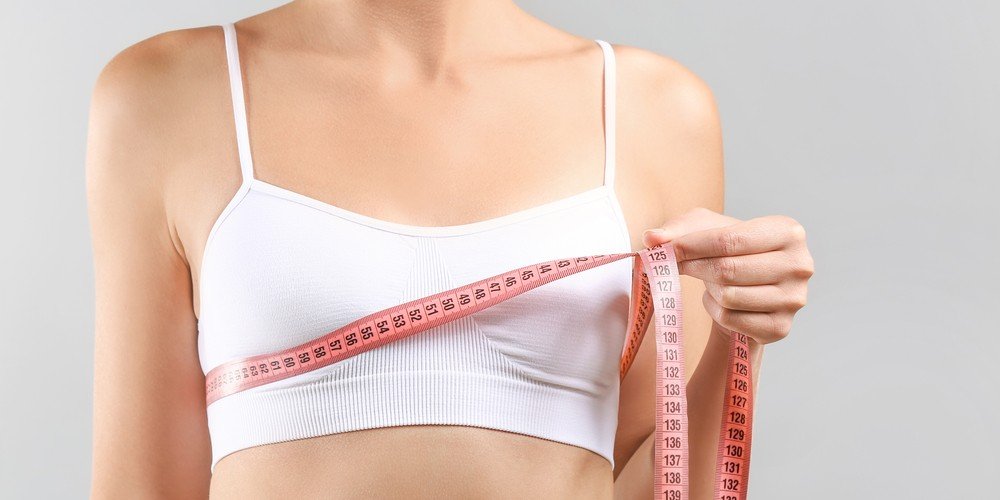When Do A Woman’s Breasts Stop Growing?

A woman’s breast development typically follows a well-defined pattern, but the exact timeline can vary significantly from person to person. Breasts usually start developing during puberty, which typically begins between the ages of 8 and 13, although it can start earlier or later for some individuals. Breast growth is driven by hormonal changes, primarily the release of estrogen, which triggers the development of glandular and fatty tissues in the breasts.
For most girls, breast development continues throughout their teenage years and often stabilizes by the age of 18 to 20, although some growth may still occur into the early twenties. However, it’s important to note that breast development doesn’t stop entirely at a specific age. Breasts can change throughout a woman’s life due to factors like pregnancy, weight fluctuations, hormonal fluctuations during the menstrual cycle, and menopause. Pregnancy, in particular, can cause significant changes in breast size and shape as the body prepares for breastfeeding.
Additionally, breast size and development can also be influenced by genetics, overall health, and lifestyle factors. While there’s no definitive age at which a woman’s breasts stop growing, it’s crucial to remember that breasts are dynamic and can change in response to various factors throughout a woman’s life. If you have concerns about your breast development or changes, it’s a good idea to consult with a healthcare provider for guidance and support.
Understanding Breast Development: From Adolescence Onward

Breast development is a complex and ongoing process that begins during adolescence and continues throughout a woman’s life. It is primarily driven by hormonal changes and can be divided into several key stages:
- Adolescence (Puberty): Breast development typically starts during puberty, which varies from person to person but generally occurs between the ages of 8 and 13. Hormones, primarily estrogen, stimulate the growth of glandular and fatty tissues in the breasts. This leads to the development of breast buds, which are small, firm lumps under the nipple and areola. As puberty progresses, these buds grow, and the breasts gradually take on a fuller, rounded shape.
- Teenage Years: Breast growth continues throughout the teenage years and often stabilizes by the age of 18 to 20 for most individuals. During this time, breasts may undergo further changes in size, shape, and texture. It’s common for one breast to develop slightly faster or be larger than the other, but they typically even out over time.
- Pregnancy and Childbirth: Perhaps the most significant changes in breast development occur during pregnancy. Hormonal fluctuations, particularly increased levels of estrogen and progesterone, cause the breasts to enlarge and prepare for lactation. This can result in a substantial increase in breast size and a change in their appearance. After childbirth, the breasts continue to change as they produce milk for breastfeeding. Once breastfeeding concludes, the breasts may return to their pre-pregnancy size and shape, but some changes may be permanent.
- Adulthood and Aging: As a woman enters adulthood and ages, her breasts can continue to evolve due to hormonal fluctuations related to the menstrual cycle and menopause. Breasts may lose some firmness and elasticity over time, and changes in breast tissue composition can occur. Regular exercise, a healthy lifestyle, and wearing supportive bras can help maintain breast health and appearance.
It’s important to recognize that breast development is highly individual and can vary significantly from person to person. Genetic factors, overall health, and lifestyle choices also play a role in determining breast size and shape. Regular breast self-exams and mammograms (recommended starting at a certain age) are essential for monitoring breast health and detecting any potential issues. If you have specific concerns about your breast development or changes, consulting with a healthcare provider is advisable for guidance and reassurance.
Puberty Milestones: Initial Breast Growth and Changes
One of the significant milestones in the journey of puberty for many girls is the initiation of breast development. This marks the beginning of physical changes that signify the transition from childhood to adolescence. Typically, breast development unfolds in stages.
At the onset of puberty, usually between the ages of 8 and 13, girls may notice the formation of small, firm lumps beneath the nipples and areolas. These are called breast buds and are one of the first signs of breast development. It’s important to understand that the exact timing and pace of these changes can vary from person to person, and it’s not uncommon for one breast to develop slightly ahead of the other.
As puberty progresses, the breast buds continue to grow, and the breasts gradually take on a fuller, rounded shape. Hormones, particularly estrogen, play a crucial role in stimulating the growth of glandular and fatty tissues in the breasts. Alongside this growth, there may be changes in the nipples and areolas, such as increased prominence and darkening in color. These initial breast changes are a normal and natural part of puberty, and they signal the body’s progression toward adulthood. Open and supportive communication with caregivers or trusted adults can help girls navigate these physical changes with confidence and understanding.
Genetics and Growth Patterns: Factors Influencing Breast Size

Breast size is influenced by a combination of genetic, hormonal, and environmental factors, making it highly individualized. Genetics, in particular, play a significant role in determining the fundamental size and shape of a woman’s breasts.
Family genetics often play a crucial role in breast size. If a woman’s close female relatives, such as her mother or grandmother, have larger or smaller breasts, there’s a higher likelihood that she will inherit a similar breast size. Genetic factors establish the baseline amount of glandular tissue and fat present in the breasts.
Hormonal factors also contribute to breast development within this genetic framework. During puberty, estrogen and progesterone stimulate the growth of glandular and fatty tissues in the breasts. Hormonal fluctuations during the menstrual cycle can lead to temporary changes in breast size and tenderness.
While genetics lay the foundation for breast size, other factors such as body weight and fat distribution also come into play. Breasts consist of a significant amount of fatty tissue, so individuals with higher body fat percentages may have larger breasts. However, it’s essential to remember that breast size can vary independently of overall body size, and factors like age, pregnancy, breastfeeding, and lifestyle choices can also influence breast size. Ultimately, what’s most important is that individuals feel comfortable and confident in their bodies, regardless of their breast size.
Development Phases: Stages of Breast Maturation
Breast maturation is a multi-stage process that spans from early childhood to adulthood. It is driven by hormonal changes and can be divided into several key stages:
- Infancy and Childhood: In infancy and early childhood, both girls and boys have relatively undeveloped breast tissue. Hormone levels are low during this period, and breast development is minimal. The primary purpose of breast tissue at this stage is to provide a foundation for future development.
- Puberty: Puberty marks the onset of significant breast development, primarily in girls. During this stage, typically beginning between the ages of 8 and 13, the body undergoes hormonal changes, including increased levels of estrogen. This hormone stimulates the growth of glandular and fatty tissues in the breasts. The first visible sign of breast development is the formation of small, firm lumps under the nipples, known as breast buds. These buds gradually grow, and the breasts take on a fuller, rounded shape.
- Teenage Years: Breast development continues throughout the teenage years, and the size and shape of the breasts can vary among individuals. Hormonal fluctuations during the menstrual cycle may also lead to temporary changes in breast size and tenderness. By the late teens or early twenties, most girls’ breast development stabilizes, although some growth may still occur into early adulthood.
- Adulthood and Aging: After reaching maturity, the size and shape of the breasts may continue to change throughout a woman’s life. Factors like pregnancy, breastfeeding, weight fluctuations, hormonal changes during menopause, and overall health can influence breast size and firmness.
Breast maturation is a dynamic and individualized process influenced by genetics, hormones, and various life events. It’s important to recognize that there is no universally “ideal” breast size or shape, and each person’s journey through breast development is unique. Maintaining breast health and seeking medical advice for any concerns or changes is crucial for overall well-being.
Late Bloomers: Breast Growth in the Early Twenties

Breast development is a highly variable process, and while many individuals experience significant growth during puberty, there are those who continue to see changes well into their early twenties. These individuals are sometimes referred to as “late bloomers” in terms of breast development.
Several factors can contribute to delayed breast growth in some individuals:
Genetics play a crucial role in determining the timing and extent of breast development. Some individuals may inherit genetic traits that lead to a slower pace of development, resulting in continued breast growth into their early twenties.
Hormonal fluctuations can affect breast development. Variations in hormone levels, such as estrogen and progesterone, can impact the rate at which the breast tissue grows. Hormonal imbalances or fluctuations can be temporary and can resolve over time.
Lifestyle choices, such as nutrition and overall health, can influence breast development. Maintaining a balanced diet and a healthy body weight can support normal hormonal functioning and contribute to the expected pace of breast growth.
Certain medical conditions or medications can also affect the timing of breast development. Some individuals with underlying health issues or who are taking specific medications may experience delays in breast growth.
Late bloomers in terms of breast development should remember that there is a wide range of normal when it comes to the timing of physical changes. It’s important to stay patient and understand that breast development is a highly individualized process. In most cases, individuals who are late bloomers eventually experience the expected breast growth and development. However, if concerns persist or if growth appears significantly delayed compared to peers, consulting with a healthcare provider can provide valuable guidance and address any underlying issues.
Pregnancy and Breast Changes: A Natural Evolution
Pregnancy is a transformative period in a woman’s life, and it brings about significant changes in the body, including profound alterations to the breasts. These changes are a natural evolution as the body prepares for the vital role of breastfeeding. Here are some key breast changes that occur during pregnancy:
One of the earliest signs of pregnancy is breast enlargement. Hormonal changes, particularly increased levels of estrogen and progesterone, stimulate the growth of glandular tissue and an increase in blood flow to the breasts. As a result, the breasts become larger, fuller, and may feel more tender or sensitive.
During pregnancy, the areolas (the dark-colored skin surrounding the nipples) often become darker and may also increase in size. This change is thought to make it easier for newborns to locate and latch onto the nipple during breastfeeding.
Many women experience breast tenderness and soreness during pregnancy, especially in the early stages. This discomfort is typically due to hormonal changes and the increased blood flow to the breasts. It tends to improve as the pregnancy progresses.
Throughout pregnancy, the milk ducts in the breasts grow and branch out in preparation for milk production. This is a critical part of the body’s preparation for breastfeeding.
These breast changes during pregnancy are entirely normal and necessary for the future nourishment of the baby. After childbirth, the breasts continue to evolve as they transition into the role of milk production. While some of these changes may be temporary and revert after breastfeeding concludes, others can have a lasting impact on breast size and shape. It’s important for expectant mothers to embrace these changes as part of the natural process of pregnancy and to seek support and guidance from healthcare providers for a healthy and successful breastfeeding experience.
Hormonal Fluctuations: Impact on Adult Breast Size

Hormonal fluctuations can have a notable impact on adult breast size and can lead to changes in breast size and shape even beyond puberty. These hormonal variations can occur due to a variety of factors and life stages:
- Menstrual Cycle: Hormonal changes that occur throughout the menstrual cycle can lead to temporary changes in breast size and tenderness. Many women experience breast swelling and discomfort in the days leading up to their period, which is often attributed to increased levels of estrogen and progesterone. These fluctuations can cause the breast tissue to retain water and temporarily increase in size. As the menstrual cycle progresses, these changes typically subside.
- Pregnancy: Pregnancy involves significant hormonal shifts, including elevated levels of estrogen and progesterone. These hormones are essential for preparing the breasts for breastfeeding. During pregnancy, the breasts typically enlarge and become fuller in preparation for milk production. These changes can result in a noticeable increase in breast size, and while some of this growth is temporary, some women experience lasting changes in breast size and shape after childbirth.
- Menopause: Menopause marks a significant hormonal transition for women, characterized by a decrease in estrogen and progesterone production. As hormone levels decline, the breast tissue may lose some of its elasticity and firmness. This can lead to a reduction in breast size and changes in breast shape.
- Hormone Replacement Therapy (HRT): Some women opt for hormone replacement therapy to manage menopausal symptoms. HRT involves taking hormones like estrogen and progesterone, and it can lead to changes in breast size and fullness. These changes are typically reversible when HRT is discontinued.
It’s important to note that while hormonal fluctuations can influence adult breast size, genetics also play a significant role in determining a person’s baseline breast size. Moreover, lifestyle factors like weight fluctuations, exercise, and diet can also impact breast size and shape. For individuals who have concerns about breast size or changes, consulting with a healthcare provider can help address questions and provide guidance on the available options for achieving their desired breast size or managing any related concerns.
Maintaining Healthy Breasts: Lifestyle and Care Beyond Growth
Maintaining healthy breasts is essential for overall well-being, extending beyond concerns about growth or size. Here are key lifestyle and care practices to foster breast health:
Regular breast self-exams enable individuals to monitor their breast health actively. Becoming familiar with the normal look and feel of one’s breasts empowers early detection of any unusual changes, such as lumps, skin alterations, or nipple discharge. It’s advisable to perform self-exams monthly and promptly report any changes to a healthcare provider for evaluation.
Diet plays a crucial role in breast health. A balanced diet rich in fruits, vegetables, whole grains, lean proteins, and healthy fats provides essential nutrients and antioxidants that support breast tissue health. Maintaining a healthy body weight through diet and exercise is also important, as excessive body fat can increase the risk of certain breast conditions.
Physical activity contributes to overall well-being, including breast health. Regular exercise helps maintain a healthy body weight and reduces the risk of certain breast conditions. Aim for at least 150 minutes of moderate-intensity aerobic activity or 75 minutes of vigorous-intensity aerobic activity per week, along with muscle-strengthening activities on two or more days a week.
Limiting alcohol consumption and avoiding smoking are vital for breast health. Excessive alcohol intake is associated with an increased risk of breast cancer, so moderation is advised. Smoking is linked to a higher risk of breast cancer, making it crucial to abstain from tobacco products.
Depending on age and risk factors, healthcare providers may recommend breast health screenings such as mammograms, clinical breast exams, and breast MRI. These screenings aid in early detection and intervention, increasing the chances of successful treatment if any issues are found.
In case of any concerns or noticeable changes in breast health, it’s imperative to consult a healthcare provider promptly. Early detection and timely medical advice are essential for addressing potential breast issues and maintaining long-term breast health.
Consulting a Professional: Expert Insight on Breast Development

Consulting a healthcare professional or specialist can offer valuable insights and guidance when it comes to breast development. Healthcare providers, including gynecologists, pediatricians, or endocrinologists, possess the expertise to comprehensively assess breast development. They can evaluate the stage of development, identify any irregularities, or uncover underlying medical conditions that may influence breast growth. This evaluation can provide reassurance and identify issues that require further attention or treatment.
Every individual’s body is unique, and breast development can vary widely from person to person. Consulting a professional allows for personalized guidance tailored to an individual’s specific circumstances and concerns. Whether it’s addressing delayed development, asymmetry, or other breast-related issues, a healthcare provider can offer recommendations and treatment options as needed.
Early detection of abnormalities or concerns related to breast development is crucial. Healthcare professionals can identify potential red flags, such as unusual lumps or hormonal imbalances, and take appropriate action. Timely intervention can make a significant difference in addressing and managing breast health issues effectively. Additionally, healthcare providers can provide educational support, helping individuals and their families understand the natural progression of breast development, lifestyle choices, and genetics’ influence on breast size and health. Consulting a healthcare professional ensures that individuals receive personalized guidance, timely intervention, and the knowledge they need to make informed decisions about their breast health, promoting confidence and peace of mind throughout their breast development journey.












